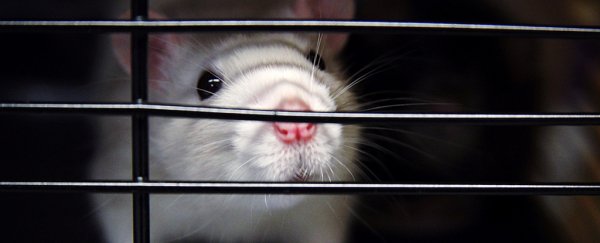Animal studies in science are experiments that control an animal's behaviour or physiology for study, often to serve as a model for human biology where testing on humans is impractical or unethical.
The species or classification of animals used in testing largely depends on the goal of the experiment.
For example, zebrafish are quick to breed, easy to house, and transparent as embryos - but they also carry 70 percent of the genes found in humans. All this makes them suitable for studies on human disease and embryological development.
Rodents have a long history of being used for science experiments, and today make up around three quarters of all animal subjects in testing. Easy to raise and breed, their mammalian physiology and genomes overlap even more considerably with those of humans, making them suitable models for studying behaviours, toxicology, and the effects of medical treatments.
Non-human primates, especially chimpanzees and rhesus monkeys, have also been used extensively in scientific testing. While harder to reproduce in large numbers and challenging to house comfortably, experiments on our closest evolutionary relatives can yield valuable information on a wide range of issues, from drug toxicity to neurology.
However, the close likeness of non-human primates to ourselves also means their use in experiments is the most controversial of all types of animal testing. Generally, data across different countries, including the European Union, show that non-human primate research constitutes less than 1 percent of all animal studies.
However, studies on monkeys aren't yet phased out: In 2017, the US had a record-high number of studies involving monkeys.
How useful are animal models in experiments?
If conducted under strict methods with appropriate protocols, animal experimentation can provide reliable evidence on how that animal's physiology or behaviour responds under the experiment's conditions; genetic studies are particularly effective, while behavioural studies can yield less firm conclusions.
Unfortunately, the nature of experiments that make use of animal models can often lend themselves to being poorly designed, conducted, or analysed. There can also be a sex imbalance, with much of rodent research done only on male mice, for example.
Experiments that apply the findings to human biology require significant assumptions on whether any differences between them are significant. Even where animals are genetically altered to better reflect human biochemistry, there is always the risk that an unidentified behaviour or function might mean the experimental results can't be applied to humans.
This doesn't make animal models useless. As with all experiments, the weight of replicated experiments performed critically under peer review determines how confident we should be in a set of results.
It does mean we ought to be cautious about how results from an experiment based on an animal model might apply to our own bodies.
What are the ethics of testing on animals?
Concerns surrounding experiments using animal models are often based on the morality of depriving animals of their liberty or subjecting them to pain or discomfort, to meet a human need or value.
At an extreme end of the ethics spectrum is the claim that all animals have rights equal to humans, and therefore any experiment that wouldn't ethically be conducted on humans shouldn't be conducted on any animal.
Ethics boards today tend to weigh up the potential benefits of an experiment with the risks of harm and suffering to the animal. However, what constitutes a benefit, as well as objective ways to define acceptable limits of harm, pain, and discomfort in different animals can make this more challenging than first appears.
What is the future of animal testing?
More than half a century ago, zoologists William Russell and Rex Burch suggested experimentation should become more humane by following the three Rs; restrict when to use animals; refine the kinds of experiments conducted on them; and replace as the technology becomes available.
Advances in computer modelling and in-vitro tissue culture design are continuing to provide alternatives to animal models that don't suffer from the same ethical and practical limitations.
Human tissue models, such as those making up 3D tissue conglomerates called organoids, are increasingly serving as appropriate models for studying growth and development.
These solutions might not make the way we conduct the experiments themselves more trustworthy. But with robust debate and reliable review procedures, they will steadily make animal testing - and the ethical and practical problems they bring - a thing of the past.
All Explainers are determined by fact checkers to be correct and relevant at the time of publishing. Text and images may be altered, removed, or added to as an editorial decision to keep information current.
